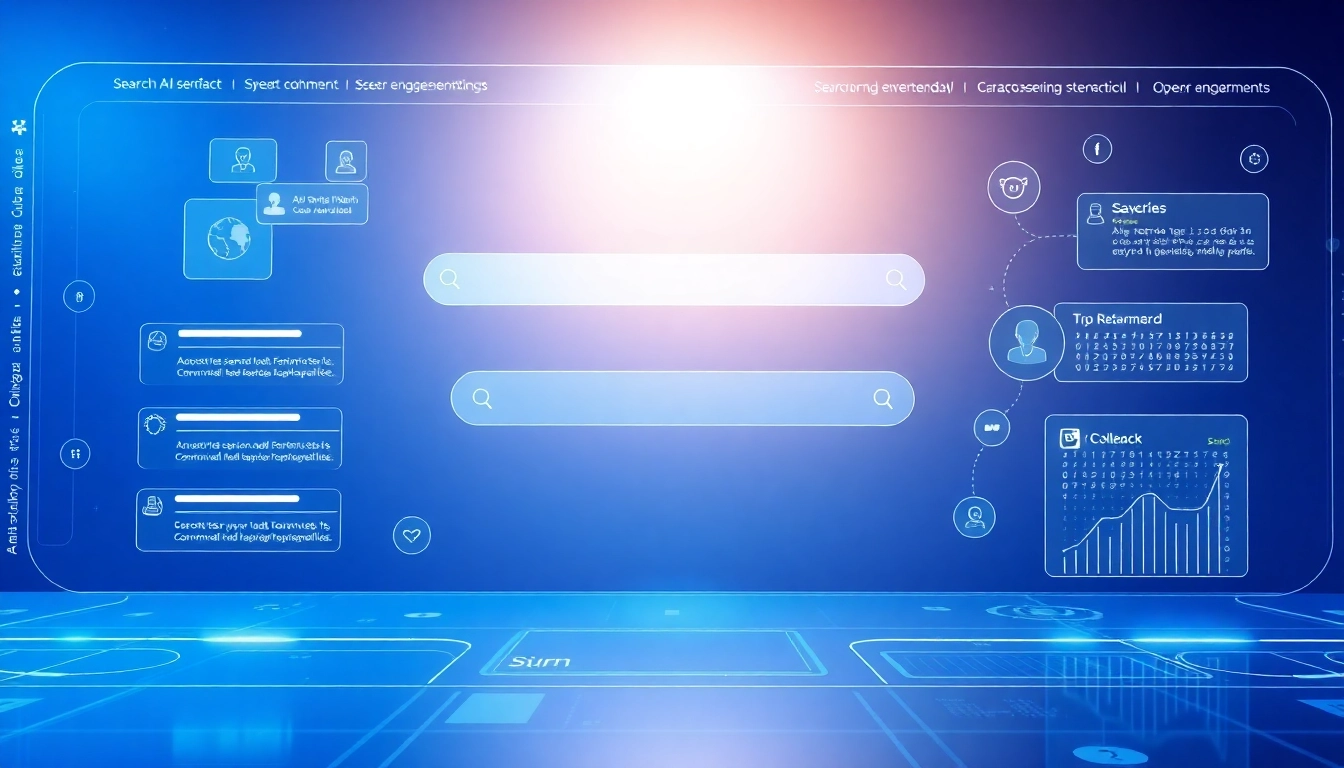Understanding Plagiarism Detectors
What is a Plagiarism Detector?
A plagiarism detector is a crucial tool designed to identify instances of copied or improperly referenced content in written material. Such tools serve an essential role in maintaining academic integrity and originality by scanning documents for similarities with published works, databases, and online content. These detectors employ complex algorithms and techniques to highlight word for word matches and paraphrased content, making them invaluable for students, educators, and professionals alike. In today’s digital age, where information is readily available online, a reliable plagiarism detector safeguards against inadvertent copyright infringement and promotes the ethical use of ideas and arguments from other authors.
How Plagiarism Detectors Work
Plagiarism detectors operate through a blend of advanced technologies, including text matching algorithms, natural language processing (NLP), and machine learning techniques. When a document is submitted, the detector breaks the text into smaller segments and compares these segments against large databases comprising academic papers, articles, books, and web pages. Here’s a closer look at the typical workings of a plagiarism detector:
- Text Input: Users upload or paste their text, which is then processed by the software.
- Text Analysis: The software analyzes the text using syntactic and semantic analysis to understand its meaning, structure, and context.
- Database Comparison: The tool checks the text against a vast repository of existing content to find matches or near-matches.
- Similarity Report: After the scan, a report is generated that details the percentages of originality, flagged sections, and their sources.
This intricate process provides users with a comprehensive overview of where their content stands concerning originality and can help them make necessary adjustments to maintain academic standards.
Benefits of Using a Plagiarism Detector
The use of plagiarism detectors extends far beyond merely avoiding the penalties associated with academic dishonesty. Here are several key benefits:
- Enhanced Academic Integrity: Ensures compliance with ethical standards essential in academic and professional writing.
- Improved Writing Skills: By highlighting areas where citations are necessary, users can learn to better attribute ideas, ultimately improving their writing.
- Time-Saving: Quick and efficient scanning processes provide results in seconds, allowing users to focus on content quality rather than manual checks.
- Deterrent Effect: Knowledge of being able to check for plagiarism may deter individuals from attempting to submit copied work.
- Real-Time Feedback: Many modern detectors provide instant feedback, allowing users to make corrections before submission or publication.
Choosing the Right Plagiarism Detector
Comparison of Popular Plagiarism Detectors
With numerous plagiarism detection tools available on the market, selecting the right one can be overwhelming. Below is a brief comparison of some popular options:
| Plagiarism Detector | Free Version | Real-time Scanning | Reports Generated | Comparison Against Databases |
|---|---|---|---|---|
| Grammarly | Limited | Yes | Detailed | Extensive |
| Duplichecker | Yes | No | Basic | Moderate |
| Scribbr | Limited | Yes | Thorough | Academic-focused |
| Turnitin | No | Yes | Extensive | Institutional databases |
This comparison highlights the unique features and capabilities of each tool, aiding users in selecting one that aligns with their specific needs.
Key Features to Look For
It’s essential to consider several factors when choosing the right plagiarism detector. Here are some key features to look for:
- Accuracy: The effectiveness of detecting and reporting plagiarism is paramount. Verified customer reviews can provide insights into the accuracy of the tool.
- Database Size: A broader database increases the chances that the detector will find duplicates, so consider tools with partnerships with academic institutions and journal publishers.
- User Interface: A straightforward, user-friendly interface ensures a smooth experience, enabling users to navigate the process easily.
- Report Customization: The ability to customize the report, highlighting different levels of plagiarism detection, can be beneficial for specific needs.
- Privacy Assurance: Look for tools that offer guarantees regarding the privacy and confidentiality of your documents.
Free vs. Paid Plagiarism Detectors
When choosing a plagiarism detector, users often grapple with the decision between free and paid versions. Each option comes with its pros and cons:
Free Plagiarism Detectors
Free tools provide an accessible entry point to plagiarism detection. They are suitable for casual use, simple essays, or initial checks. However, they often have restrictions on text length, database access, and the depth of reporting.
Paid Plagiarism Detectors
Paid services typically offer a more comprehensive service, with broader database access, deeper analysis, and additional features such as grammar checks and style suggestions. They are often necessary for academic institutions and professionals who require thorough reviews of longer documents.
How to Effectively Use a Plagiarism Detector
Preparing Your Document for Scanning
Proper preparation is essential for obtaining accurate results from a plagiarism detector. Here are some best practices:
- Format Consistently: Ensure your document is well-organized with proper formatting, including headings and subheadings, as this aids in readability during scanning.
- Proofread Your Work: Before submitting, ensure that spelling and grammatical errors are minimized. Many detectors flag such issues, which can distract from the main plagiarism results.
- Remove Unnecessary Sections: Eliminate any sections of the document that do not require scanning, such as large quotes or references, to focus the detector’s analysis effectively.
Interpreting the Results
Once the plagiarism detector has completed its analysis, interpreting the results is crucial for making informed decisions. Here are key elements to look for:
- Overall Similarity Score: This percentage indicates how much of your content is similar to other sources. A high percentage may warrant further scrutiny.
- Sources Listed: The report usually includes a list of sources that have similarities with your content. Cross-reference them to determine if they warrant citation.
- Highlighted Sections: Look for specific sections of text flagged for similarity. Assess if these require paraphrasing or direct citation.
Best Practices to Avoid Plagiarism
Preventing plagiarism is a proactive approach to writing and research. Here are some best practices:
- Understand and Use Citations: Familiarize yourself with different citation styles (APA, MLA, Chicago) and apply them rigorously to properly attribute sources.
- Paraphrase Effectively: When utilizing ideas from sources, express them in your own words while maintaining the original meaning and context.
- Maintain Original Thoughts: Ensure your writing reflects your unique insights and perspectives, reducing reliance on others’ work.
Resolving Plagiarism Issues
Steps to Take If Plagiarism is Detected
If a plagiarism detector flags your content as containing copied material, take the following steps:
- Review the Report: Obsessively check the highlighted areas and identify the issues, noting the sources listed.
- Assess the Severity: Determine whether the plagiarism is unintentional (such as inadequate citation) or if it results from deliberate copying.
- Make Corrections: Depending on your assessment, rewrite flagged sections, add citations where required, or remove excessive similarities.
How to Cite Sources Properly
Citing sources correctly is essential in avoiding plagiarism. Here are guidelines:
- Direct Quotes: Use quotation marks and cite the source whenever you use someone else’s exact words.
- Paraphrasing: Even when rewording, always credit the original author to acknowledge their ideas properly.
- Footnotes and Endnotes: Utilize these methods to provide additional context without interrupting the flow of your writing.
Rewriting Content with Integrity
In situations where content must be rewritten to ensure originality:
- Review the Original Material: Understand the core message before rewriting.
- Change Sentence Structure: Alter the wording while maintaining the original idea.
- Add Personal Insights: Infuse your unique perspective or examples to make the content more original.
Future Trends in Plagiarism Detection
AI Advancements in Plagiarism Detection
The evolution of artificial intelligence continues to shape plagiarism detection technologies. Future advancements may lead to tools capable of:
- Better understanding context and nuance, thereby distinguishing between unintentional plagiarism and common knowledge.
- Automating citation management to inform users about proper referencing in real-time.
- Integrating plagiarism detection into writing software directly, facilitating seamless usage during the writing process.
Ethics and Academic Integrity
As detection tools become more refined, the conversation surrounding ethics and academic integrity will undoubtedly evolve. Institutions may increase the severity of consequences for academic dishonesty, while also recognizing the importance of educating students about proper citation practices.
Moreover, responsible use of plagiarism detection tools will become essential to enforce educational standards while fostering a culture of originality and creativity.
Impacts on Educational Institutions
As plagiarism detectors become more ingrained in educational practices, their impact will be profound:
- Curriculum Changes: Integrating plagiarism education into the curriculum can prepare students to understand the significance of originality.
- Enhanced Support Services: Institutions may offer workshops and resources to teach proper citation and paraphrasing techniques.
- Data-Driven Decisions: Educational bodies may analyze detection data to identify trends in academic dishonesty and tailor prevention strategies accordingly.



